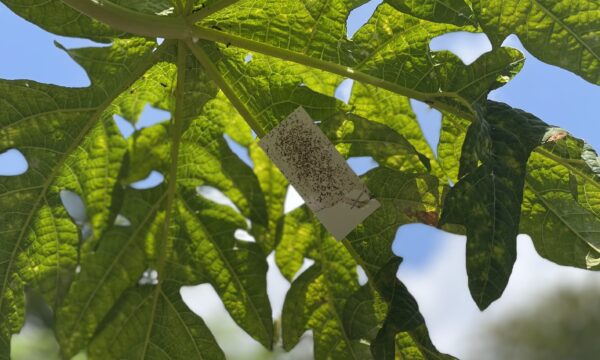
Yield reductions due to highly invasive parasitic Striga may soon be a thing of the past. (Flickr, CIMMYT CCBY-NC-SA 2.0)
Striga, commonly known as witchweed, is a group of parasitic weeds found in over a third of cereal crops in sub Saharan Africa (SSA). Crops typically yield at least 40% less when they are parasitised by Striga, causing an estimated US$ 7 billion loss and reducing the food security of millions.
This weed, which affects the roots of crops such as maize, sorghum, millet and rice, redirects water and nutrients away from these host plants, causing stunted growth as well as reduced grain yield. The significant impact that Striga has is felt most severely by the poorest subsistence farmers, who already struggle to produce enough food.
The devastating impact of this weed, which in extreme cases can result in complete crop failure, is thought to be the major biotic constraint to cereal production in SSA. This bold statement comes from scientists at The University of Sheffield, who are working on a solution to this problem.
The control of Striga is extremely difficult and previous methods have proved ineffective. Striga seeds are able to survive for up to 20 years, so even when the problem appears to have been solved, the weeds can return from dormant seeds in the soil. Previous research has focussed on reducing the host’s production of chemicals called strigolactones, which are thought to play a part in Striga germination.
Professor Julie Scholes, of The University of Sheffield, is leading a new research project into finding a definitive method of easing the impacts felt as a result of this destructive weed. Nerica rice cultivars, credited for a recent increase in rice yield due to its drought and disease resistance, have been used to study the variance in Striga-resistance. Some Nerica cultivars were found to show resistance to a range of Striga species, including two of the most problematic: S. asiatica and S. hermonthica. Some cultivars, however, showed high susceptibility to these same Striga species. It is hoped that this knowledge will aid farmers in choosing the optimum cultivar for their land and resource availability.
Scholes and her research team are now focussing on the underlying genetics that cause these crop species to be resistant to Striga. The chromosome region responsible for resistance has been identified in rice so the next step for Scholes is isolating the crucial genes that result in this trait being expressed. Once found in rice, these genes can be compared to genes identified in other resistant crops, such as sorghum. Discovery of corresponding resistance genes in both species will aid development of Striga-resistance cultivars in the future.
This £7 million project forms part of the Sustainable Agriculture Research for International Development programme established by the Department for International Development (DFID) and the Biotechnology and Biological Sciences Research Council (BBSRC).
Read more about this story on the BBSRC website.
1 Comment
Leave a Reply
Related News & Blogs
‘Sowing the seeds’ for food security in Uganda: CABI supports training for Quality Declared Seed production
CABI has been working with Zirobwe Agali-Awamu Agribusiness Training Association (ZAABTA), the Ministry of Agriculture, Animal Industry and Fisheries (MAAIF), the National Agricultural Research Organisation (NARO), and Integrated Seed Sector Developmen…
21 May 2025





Reblogged this on African Seed Network.